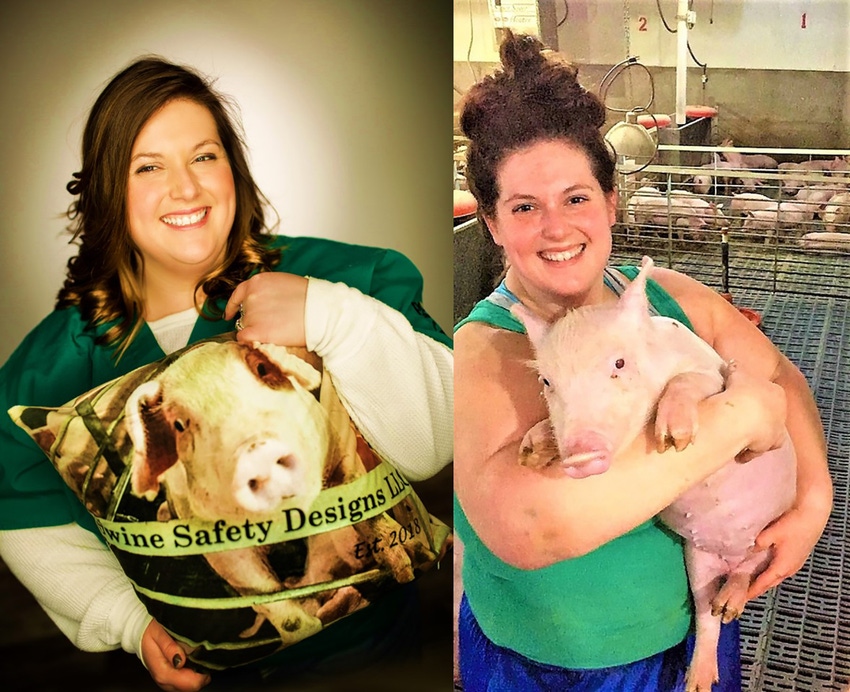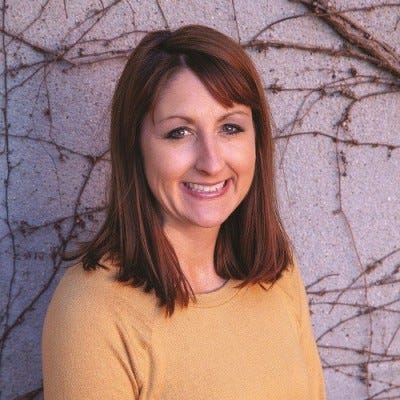Turnover trouble? New swine training aims to make onboarding easier
From onboarding and orientation to training veteran employees, Swine Safety Designs can cover just about any topic in a customized training course.

When Samantha Marais asks her clients what’s the No. 1 issue they are having with employees, the response is often one word. Turnover.
“First, they have a hard time finding quality applicants,” Marais says. “They hire someone just because they have to and don’t have a pool to choose from, but then it’s kind of a flawed system, because they hire these people and kind of throw them into things without much training. By doing that, they are not setting the employee up for success.”
It’s a shortcoming Marais, who grew up working on her family’s farrow-to-finish unit, has seen throughout the industry. It wasn’t until after college, when she started working for a large hog producer in Kansas, that she was able to pinpoint the problem. The production system where she was employed was having terrible turnover rates so one day, Marais pitched the idea to the owner to allow her to build a customized, comprehensive curriculum for the farm. The offer was accepted, and Marais was soon promoted to safety adviser and instructional designer. After four years of implementing her swine training programs, the farm went from having turnover every couple of months to a solid crew that stayed on for more than two years.
“That’s what initially inspired me, because I knew that training was so effective, by being there with a plan instead of just throwing them in and expecting them to figure it out,” Marais says. “By investing in them they know they are valued and you are investing in their future with the company.”
That success drove Marais to branch out and start Swine Safety Designs, which formally launched Jan. 9. The company’s mission is to create effective educational tools tailored to each and every client, and address issues such as onboarding of new hires, current industry issues and specific company protocols, all through instructional design.
In just two months, Marais’ training program has garnered wide interest from producers across the industry. She says many producers have told her they realize they need to change the way they add people to their systems and with several expansions in the works, many have commented they need to make that change now.
“In the industry, there’s not a lot of people for entry-level positions that have ever really worked on a farm, so starting from scratch can be difficult,” Marais says. “A lot of the generation that is training them grew up doing that but there’s not a lot of people now, that are being interviewed for those positions, that have really been introduced to agriculture as a whole.”
Marais says a good foundation is key to that employee’s success within a production system.
So how does Swine Safety Designs work?
Once a producer establishes interest and identifies the training needs for their farm, Marais builds that course from scratch. Starting with company documents, using Pork Quality Assurance, Transport Quality Assurance and Occupational Safety and Health Administration standards and incorporating any specific veterinary protocols for that farm, she helps the client come up with a standard operating procedure for the farm. After the SOP is approved by the client, she makes a farm visit and takes video and photography of the employees to incorporate into the training program.
“The two main reasons I do that is the majority of humans are visual learners, so they are more likely to absorb that information rather than reading the text and the second reason is when they see its their work environment, with people they know, they are going to directly relate it to their work and are more likely to implement it on their farm,” Marais says.
Through instructional design, producers can choose what kind of training works best for their farm. Swine Safety Designs can deliver training through three different educational approaches.
Instructor-led: A leader from the company can take the customized training and go through it in a classroom setting with a slide show.
Online: Each employee can log in and take the course on their own. Through learning management system software, Marais can see who logged in, what areas they are struggling with and provide feedback to make the program fit that farm’s needs.
Video: Employees can watch a 15- to 20-minute video on a specific topic and afterwards go over it with discussion, a quiz or handouts.
“I want to make sure that I am meeting all of the employees’ needs as well as my client, the employer,” Marais says. “If you are sitting through training that you don’t understand or don’t like or it’s not interesting, you are not going to take anything away from it, so I want to make sure I’m reaching the audience as well.”
Marais says Swine Safety Designs is different because it is tailored to each farm. While there are other companies providing training services, they are often not customized and instead generic for the industry. From onboarding and orientation to training veteran employees, Swine Safety Designs can cover just about any topic in a customized training course. Her most requested topic has been biosecurity.
“It takes a long time to build a culture around biosecurity. People need to understand how important it is and know that it is constantly changing,” Marais says. “It’s not going to be widely the same throughout several companies. It’s got to be tailored to you for your company to understand it.”
Swine Safety Designs offers six different S.A.F.E.T.Y. packages which include quarterly or monthly courses, an annual safety culture/procedure review and an annual PQA and TQA certification course. Additional services can be added to packages at a discounted price, based on which package is chosen. Each package is based on 12- to 36-month contract. All packages are flexible for content, meaning the producer can choose the topics.
Swine Safety Designs will also provide one-time workshops or training, if a farm is not looking to enter into a contract at the moment.
As Marias points out, some companies can charge up to $1,500 per minute for instructional design training services and it can also be cost prohibitive to hire a full-time staff member to lead the effort. That’s where she hopes Swine Safety Design services can come in, and right from the start.
“What many employers don’t realize is how common it is for employees to leave if they don’t receive the necessary training to do well in their positions. Research shows that a full 40% of employees who don’t receive the necessary job training will leave their positions within the first year,” Marais says. “This presents something of a dilemma for both HR and leadership because it has often been high-turnover rates that were cited as a reason for not providing ongoing employee training in the first place. Comprehensive training programs have proven time and again to help lower staff turnover.”
About the Author(s)
You May Also Like





